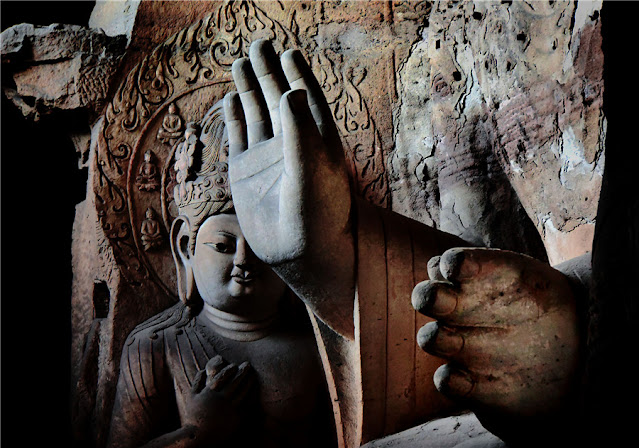The Sangha was the religious order of the Buddhists. It was a well-organised and powerful institution, which popularised Buddhism. Membership was open to all persons irrespective of caste. There was age criterion for eligibility. The inductee must have completed the age of 15 at the time of becoming a member of the Buddhist Sangha. Interestingly, many millennia later, legislators thought 15 is the right age for giving consent.
Besides,
the Buddhist Sangha would not accord membership to criminals unless reformed,
lepers (controlling infection through medication was not known or common back
then), slaves (their status in those times in India remains a subject of
discussion among historians), persons suffering from an infectious disease, and
an indebted person (who needed to pay off her debt before earning eligibility).
The Buddha
was not initially inclined to admit women into the Sangha fearing that a
gender-mix might make it difficult for the Sangha to maintain the requisite
discipline. His chief disciple, Ananda, and foster mother, Mahaprajapati
Gautami, argued for their entry into the Sangha.
The Buddha
agreed but it is said in some stories that he warned Ananda that the decision
would weaken the institution of the Sangha and cut short its life by 500 years
which would have served society for a thousand years otherwise. The Sangha
weakened over the following centuries particularly in the post-Ashoka era but
picked up strength during the Kanishka times.
The members of the Sangha were monks and followed a bureaucratic hierarchy to manage the affairs of the institution. The monks had to ceremonially shave their head and wear yellow or saffron robes upon admission into the Sangha.
Monks were
expected to go on a daily round in order to preach Buddhism and seek alms to
feed themselves. During the four months of rainy season, they stayed at one
place, usually fixed, and meditated on the questions of the contemporary
society and find answers from the tenets of Buddhism. This was called the
retreat or Vasa.
The Sangha
also promoted education among people. Unlike Brahmanism, people of different
orders of society got access to education under the Buddhist Sangha. Naturally,
the non-Brahmins got educated and the formal education reached wider sections
of society, a departure from the history of past few centuries.
The Sangha
was governed on democratic principles. It was empowered to enforce discipline
among its members. There was a code of conduct for the monks and nuns. But
differences were cropping up in the Sangha even during the time of the Buddha.
Paul Carus,
the celebrated author of the “Gospel of Buddha”, says the Buddha, on the advice
of Magadh king Bimbisar who was planning retirement, marked two days in every
fortnight for community preaching by a monk ordained in Buddhism. He fixed the
eighth and 14-15th day of every fortnight – a model Bimbisar had suggested on
the lines of the practice of some Brahmanical sect of Rajgriha, his capital.
People
started flocking to such community preaching events. But soon they complained
that the monks who were supposed to elucidate Buddhism. A dispute arose. To
settle the dispute, the Buddha provided for Pratimoksha (pardon by the Sangha
after self-confession of indiscipline or violation of the Sangha rules by a
monk). This was to be done on the same two days of the fortnight. This meeting
and the process was called Uposatha and was to be held in public.
The monk
who violated the Buddhist code had to confess upon being asked by the senior
monk at the Uposatha. Others were to remain silent. The question was to be
asked three times. If a violator remained silent three times, she/he would be
considered guilty of perjury, which was an obstacle in attaining nirvana –
freedom from the cycle of suffering.
At another place, Carus has shown that the Buddha walked out of a Sangha event as the rival monks would not listen to reason. After some time when his disciples insisted upon finding a solution, the Buddha addressed both the sides, first separately and then jointly. He had asked his disciples not to discriminate against one group or the other for their preference for one or abhorrence of the other.
In the joint session, the Buddha told them the story of a Koshal
king Deerghiti, his rival Kashi king Brahmadutta, and Deerghiti’s son Deerghayu
who ended the bitterness between the two royal families. Here, the Buddha
enunciated that hate could only be conquered by hatelessness – something that
became popular after the Bible’s narration of ‘an eye for an eye will make the
whole world blind’.
Thus, the
members of Sangha – both monks and nuns – had to follow their respective codes
of conduct. They were bound to obey the code if they were to stay within the
Sangha. The Sangha had the power to punish any of the erring members.



